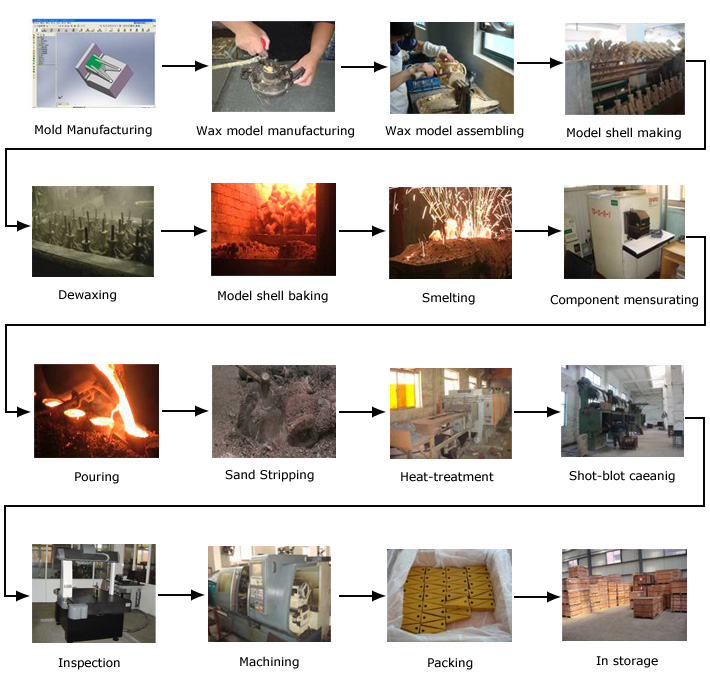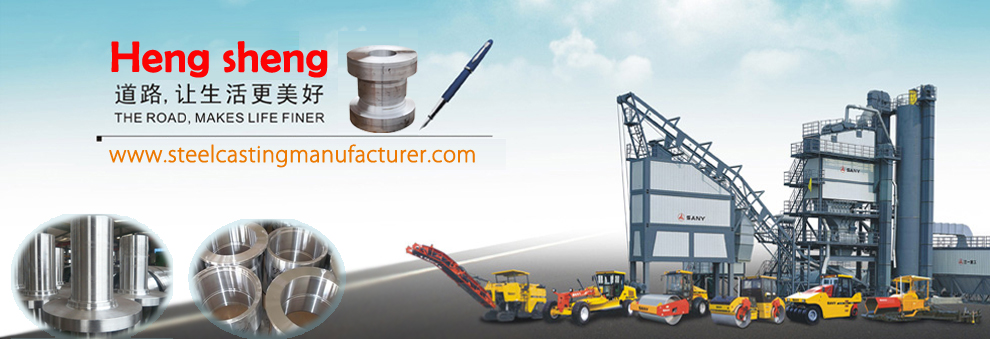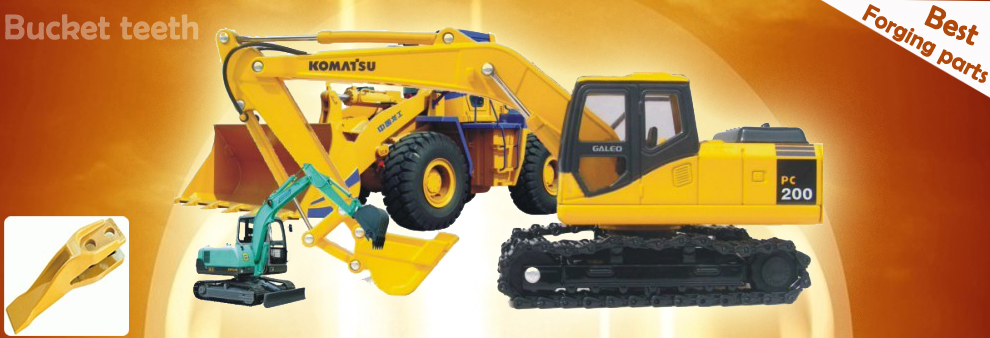-
 0086+13777146546
0086+13777146546 -
 0086+574-89257673
0086+574-89257673 -
 0086+574-89257672
0086+574-89257672 -
 sales@hshengmachinery.com
sales@hshengmachinery.com
-
 Hengxi town ,Yinzhou District, Ningbo, 315199, China
Hengxi town ,Yinzhou District, Ningbo, 315199, China
-


Home>Technology
Technology Casts can be made of the wax model itself, the direct method; or of a wax copy of a model that need not be of wax, the indirect method. These are the steps for the indirect process:
- Model-making. An artist or mold-maker creates an original model from wax, clay, or another material. Wax and oil-based clay are often preferred because these materials retain their softness.
- Moldmaking. A mold is made of the original model or sculpture. The rigid outer molds contain the softer inner mold, which is the exact negative of the original model. Inner molds are usually made of latex, polyurethane rubber or silicone, which is supported by the outer mold. The outer mold can be made from plaster, but can also be made of fiberglass or other materials. Most molds are at least two pieces, and a shim with keys is placed between the two halves during construction so that the mold can be put back together accurately. In case there are long, thin pieces sticking out of the model, these are often cut off of the original and molded separately. Sometimes many molds are needed to recreate the original model, especially for large models.
- Wax. Once the mold is finished, molten wax is poured into it and swished around until an even coating, usually about 1⁄8 inch (3 mm) thick, covers the inner surface of the mold. This is repeated until the desired thickness is reached. Another method is filling the entire mold with molten wax, and letting it cool, until a desired thickness has set on the surface of the mold. After this the rest of the wax is poured out again, the mold is turned upside down and the wax layer is left to cool and harden. With this method it is more difficult to control the overall thickness of the wax layer.
- Removal of wax. This hollow wax copy of the original model is removed from the mold. The model-maker may reuse the mold to make multiple copies, limited only by the durability of the mold.
- Chasing. Each hollow wax copy is then "chased": a heated metal tool is used to rub out the marks that show the parting line or flashing where the pieces of the mold came together. The wax is dressed to hide any imperfections. The wax now looks like the finished piece. Wax pieces that were molded separately can be heated and attached; foundries often use registration marks to indicate exactly where they go.
- Spruing. The wax copy is sprued with a treelike structure of wax that will eventually provide paths for molten casting material to flow and air to escape. The carefully planned spruing usually begins at the top with a wax "cup," which is attached by wax cylinders to various points on the wax copy. This spruing doesn't have to be hollow, as it will be melted out later in the process.
- Slurry. A sprued wax copy is dipped into a slurry of silica, then into a sand-like stucco, or dry crystalline silica of a controlled grain size. The slurry and grit combination is called ceramic shell mold material, although it is not literally made of ceramic. This shell is allowed to dry, and the process is repeated until at least a half-inch coating covers the entire piece. The bigger the piece, the thicker the shell needs to be. Only the inside of the cup is not coated, and the cup is flat top serves as the base upon which the piece stands during this process.
- Burnout. The ceramic shell-coated piece is placed cup-down in a kiln, whose heat hardens the silica coatings into a shell, and the wax melts and runs out. The melted wax can be recovered and reused, although often it is simply burned up. Now all that remains of the original artwork is the negative space, formerly occupied by the wax, inside the hardened ceramic shell. The feeder and vent tubes and cup are also hollow.
- Testing. The ceramic shell is allowed to cool, then is tested to see if water will flow through the feeder and vent tubes as necessary. Cracks or leaks can be patched with thick refractory paste. To test the thickness, holes can be drilled into the shell, then patched.
- Pouring. The shell is reheated in the kiln to harden the patches and remove all traces of moisture, then placed cup-upwards into a tub filled with sand. Metal is melted in a crucible in a furnace, then poured carefully into the shell. If the shell were not hot, the temperature difference would shatter it. The filled shells are allowed to cool.
- Release. The shell is hammered or sand-blasted away, releasing the rough casting. The sprues, which are also faithfully recreated in metal, are cut off, to be reused in another casting.
- Metal-chasing. Just as the wax copies were chased, the casting is worked until the telltale signs of the casting process are removed, and the casting now
- like the original model. Pits left by air bubbles in the casting, and the stubs of spruing are filed down and polished.
Sand casting can be used for the somewhat bigger and less complex casting products, weighing up to 1500 kg. Casting in both iron and casting steel is possible. Sand casting can also be used for stainless steel and non ferrous alloys. Draft angles are required.
With sand casting there is also a range enabling fine and high-grade casting (resin sand casting) to base material and favourably priced casting (sand casting), both are available so you can make the best choice to fit your requirements.
With sand casting there is also a range enabling fine and high-grade casting (resin sand casting) to base material and favourably priced casting (sand casting), both are available so you can make the best choice to fit your requirements.





















